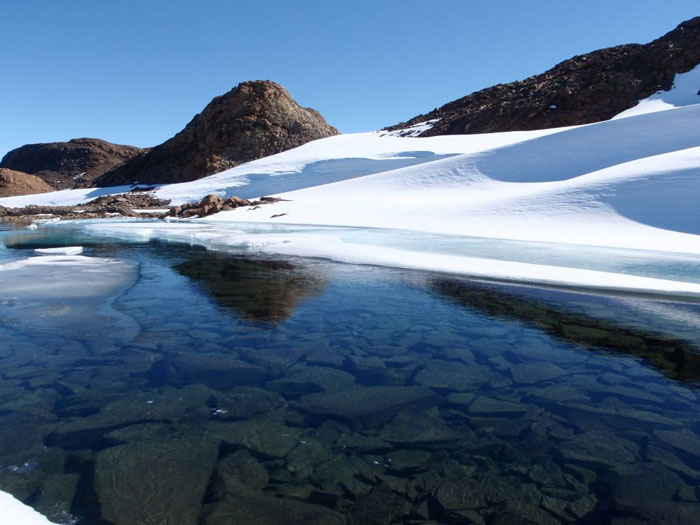The mysterious lake movement in Antarctica
Rivers and mountains can move positions over time, but at nearly half a kilometer in speed, science has never been seen. But that's exactly what is happening with a mysterious pool of Antarctic lakes. Strangely, these lakes seem to move faster than the underground ice below.
>>> Antarctic glaciers are melting at a rapid rate
According to NewScientist, these 11 lakes are located on the edge of the George IV ice shelf, a banana-shaped floating ice shelf sandwiched between the Antarctic Peninsula and Alexander Island. They were first discovered in the 70s but until last year, the strange 'immigration' phenomenon was discovered.

The phenomenon of 11 lakes simultaneously moved nearly half a tree
Numbers every year are never seen anywhere else in the world.
Dr. Douglas Macyeal of the University of Chicago gave his students a 'tedious' exercise that digitized satellite images of the Antarctic lake. A female student named Claire LaBarbera was the one who noticed the movement of the lake group from year to year. 'At first I thought, it was a funny curiosity , ' said Dr. MacAyeal. After that, he took a closer look and realized that it was true that the lakes were moving at a rate five to five times faster than the ice shelf, and in a completely different direction.
'This is a phenomenon that probably doesn't exist anywhere else in the world,' he commented.
Dr. MacAyeal believes that the explanation lies in the unusual position of the ice shelf George IV: stuck in a small 'channel' between Alexander Island and Antarctica. When the ice shelf presses into the canal, its outer edge will curl into a series of high and low areas. The lake series falls into a low-lying area. The ice shelf pours into Alexander Island at an oblique angle, so the bottom of each low-lying area will sweep along the coast, followed by the lake.
Normally, rising water above the ice shelf is a sign that ice shelves are about to collapse, as water can widen the existing cracks inside the ice.
However, expert Neil Glasser of Aberystwyth University (England) believes that the George IV ice shelf is hard to break in the near future, because it has been fixed by the two stone platforms of the 'channel'.
- There has been a new model of the mysterious Vostok lake
- Russia successfully approached the most mysterious lake in the world
- Prepare to explore the original lake of 20 million years old
- 4 most mysterious lakes in the world: The dreamy poetic, where it contains hundreds of human skeletons
- Decode the mysterious circle in Antarctica
- 'Lake of the devil': Detects tremors at a depth of 4000m
- The greatest canyon in the world hiding under the ice in Antarctica?
- Mysterious lake in the desert
- Huge pool of sediments beneath the world's most mysterious continent
- Mysterious town reveals beneath Antarctica cold?
- Exploring the South Pole
- Discovering life under thick ice in Antarctica
 Is the magnetic North Pole shift dangerous to humanity?
Is the magnetic North Pole shift dangerous to humanity? Washington legalizes the recycling of human bodies into fertilizer
Washington legalizes the recycling of human bodies into fertilizer Lightning stone - the mysterious guest
Lightning stone - the mysterious guest Stunned by the mysterious sunset, strange appearance
Stunned by the mysterious sunset, strange appearance